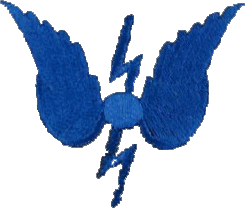|
|
|
|
|
DATE OF DESIGN | |
1944 |
|
POWER SUPPLIES | |
12 Volts (50 AH) Battery (AP W3433A). This allows for 11 hours of continuous operation if used in periods of 10 minutes transmission, 10 minutes reception. |
|
RANGE IN MILES. | |
R/T - 2 to 5 miles or M.C.W. - 3 to 10 miles. In both cases range is dependent on aerial height. |
|
WAVEFORM | |
R/T or MCW. |
|
FREQUENCY BANDS | |
Type 686 is designed to operate on one of 5 spot frequencies which are colour coded on the transmitter and receiver tuning dials, as follows:A - blue B - white C - yello D - black E - brown. |
|
FURTHER READING | |
|


